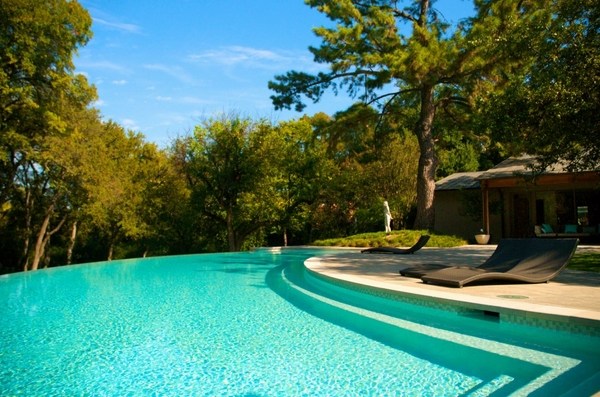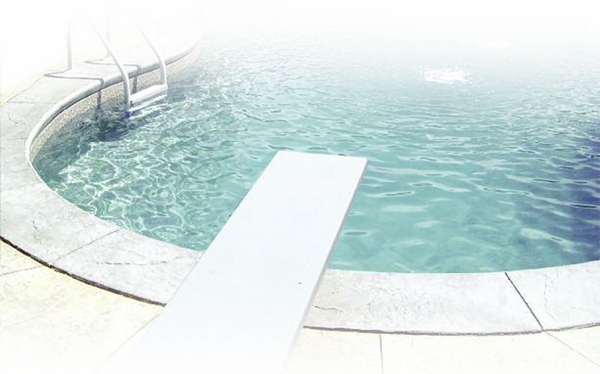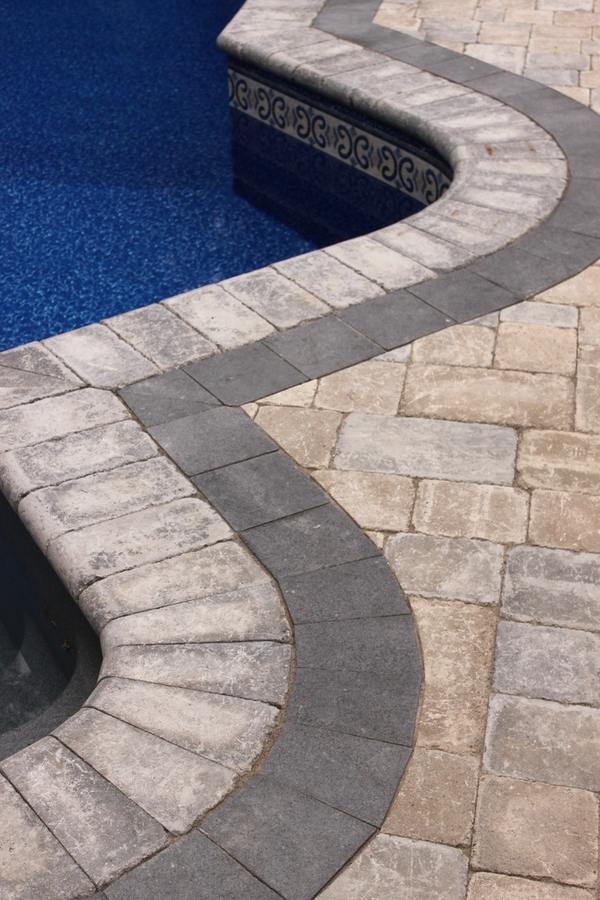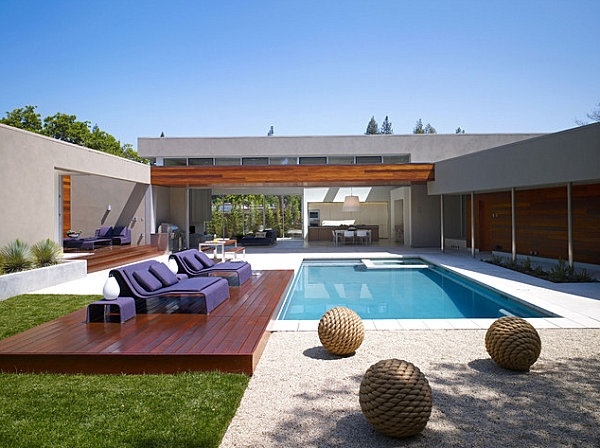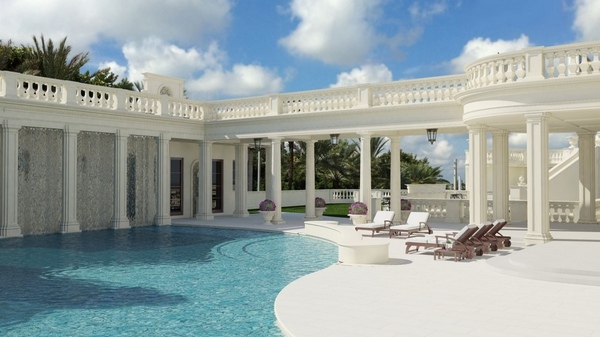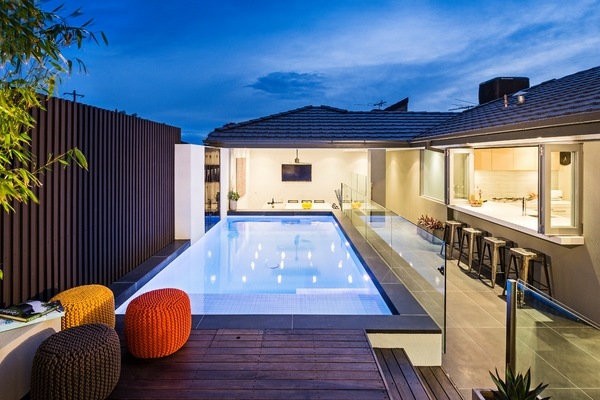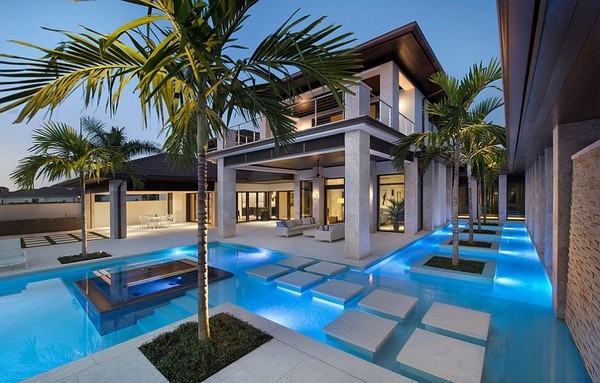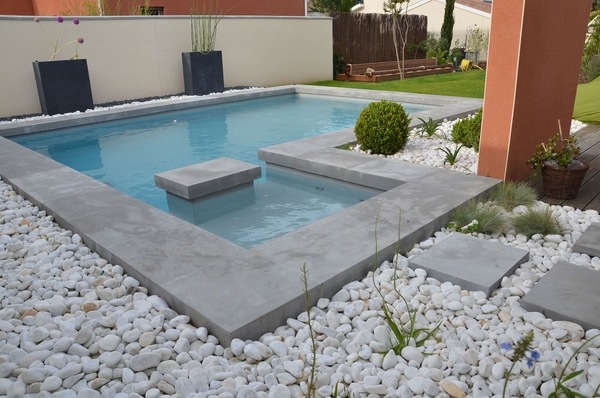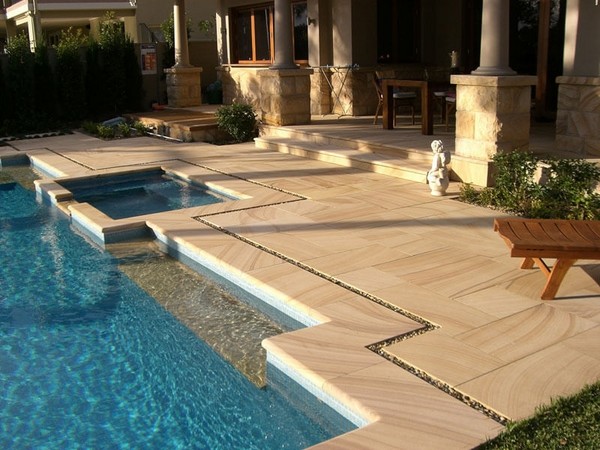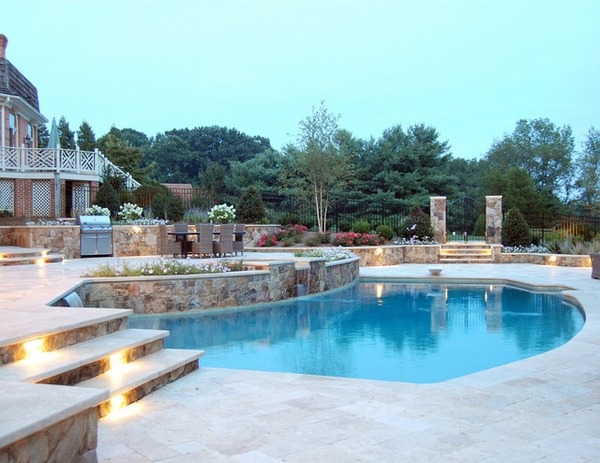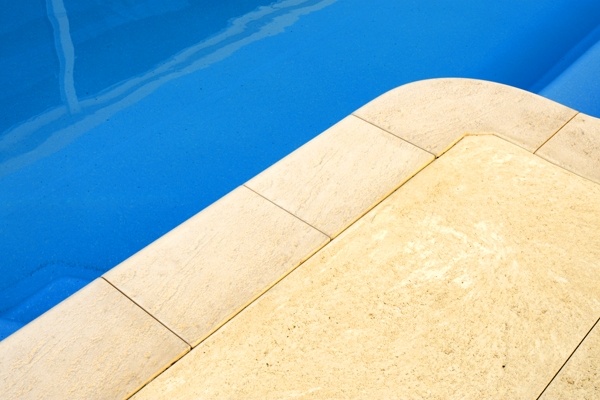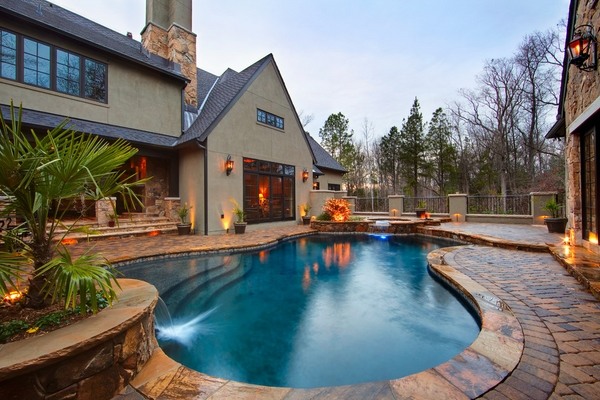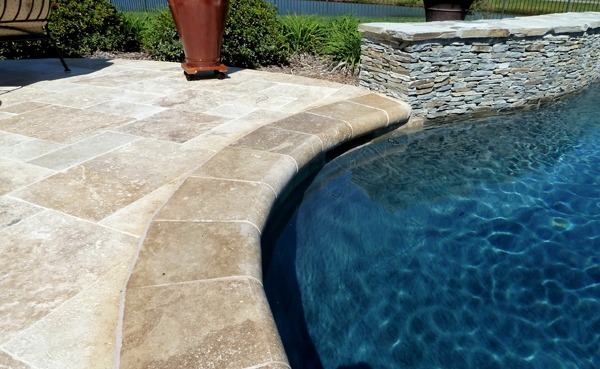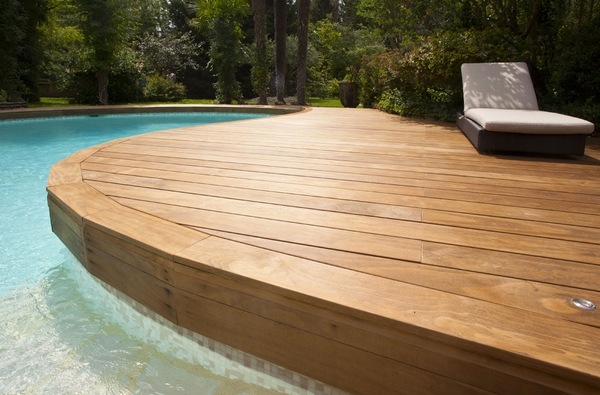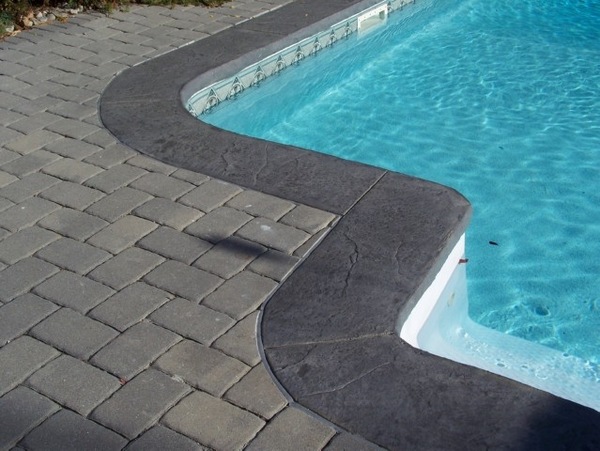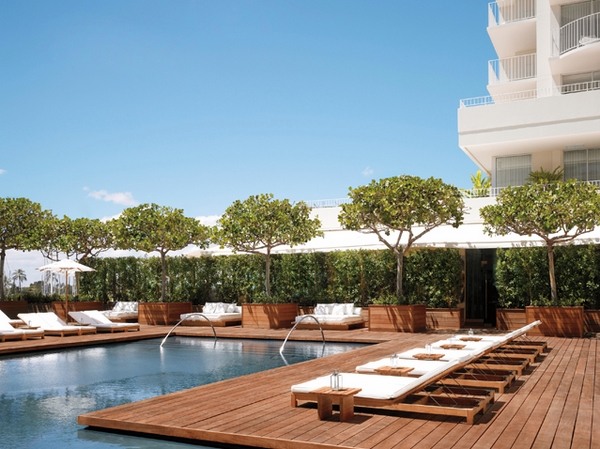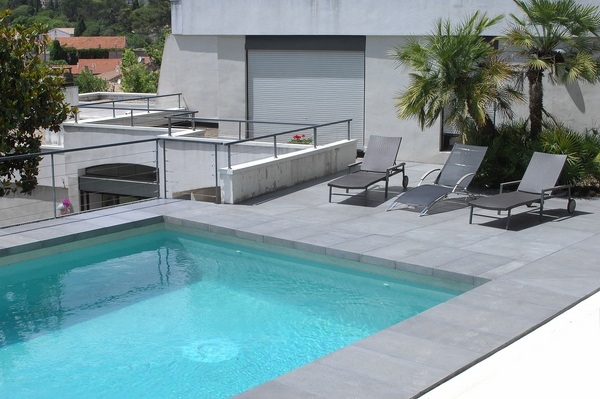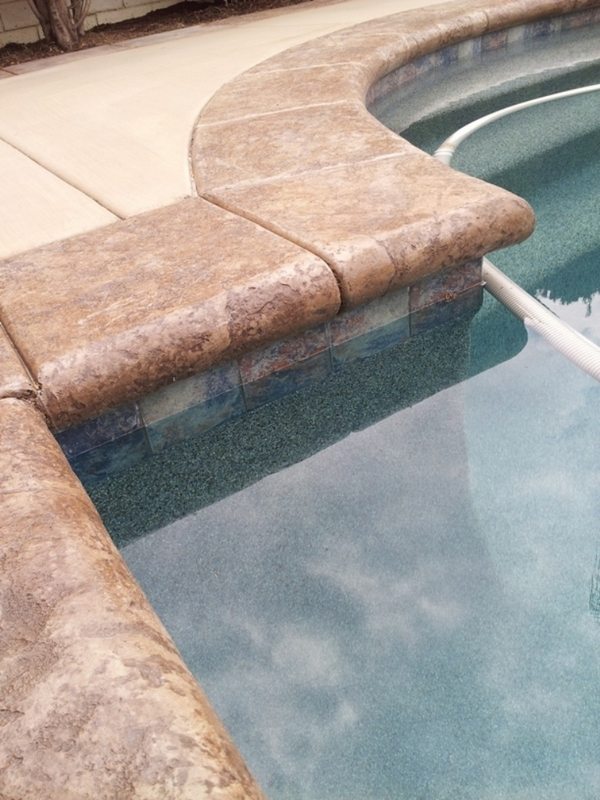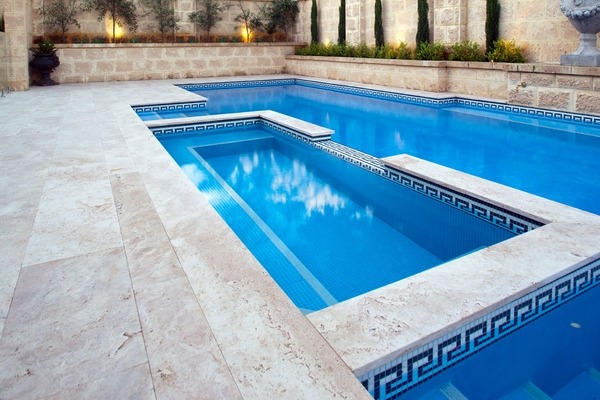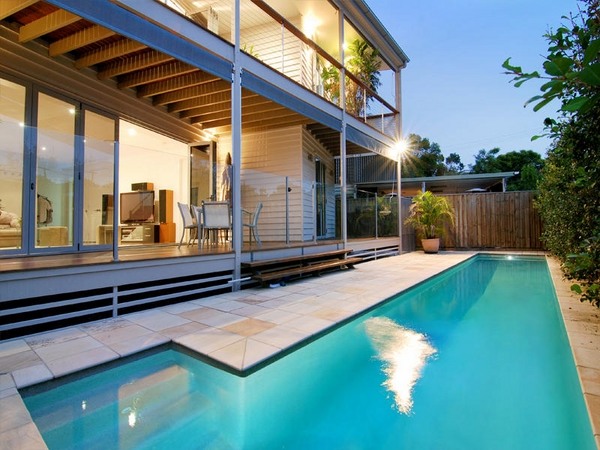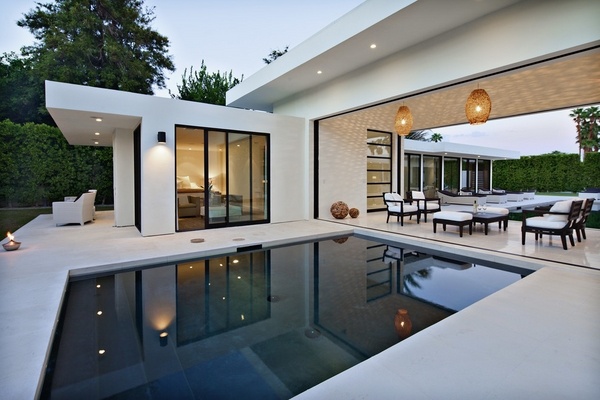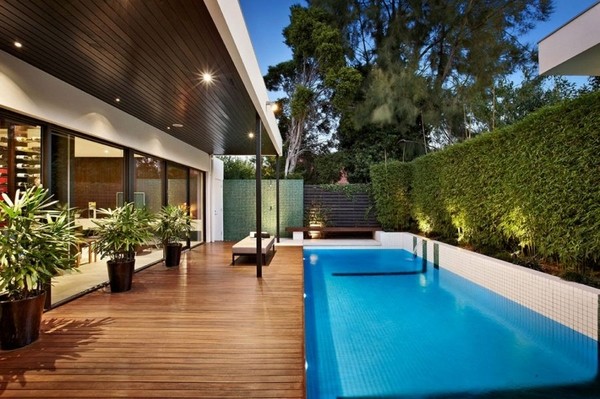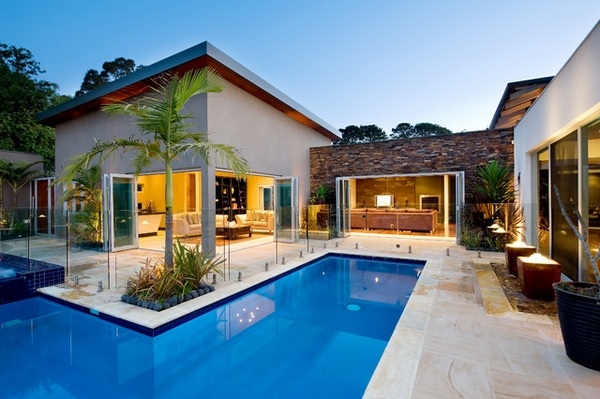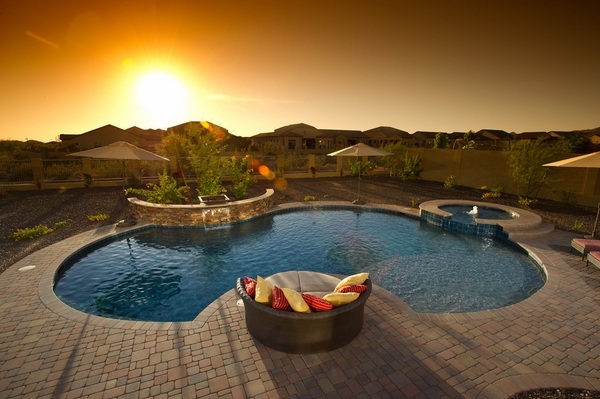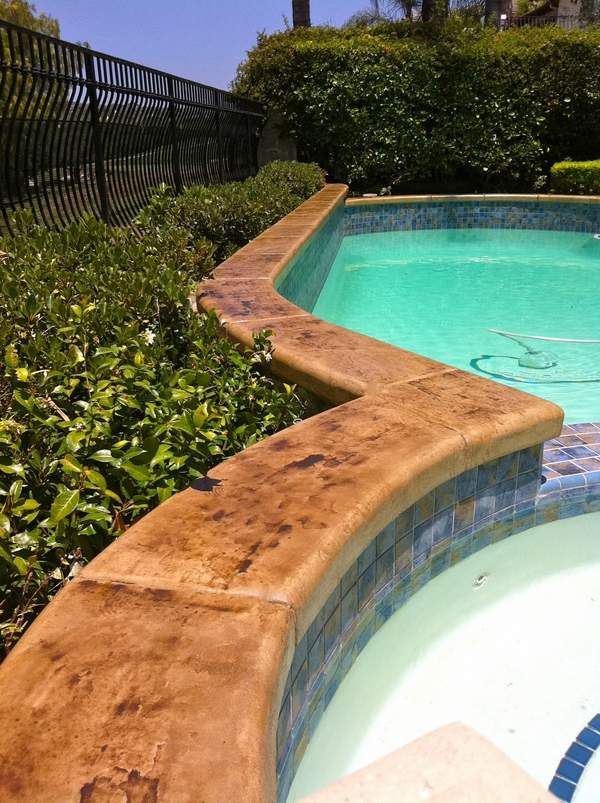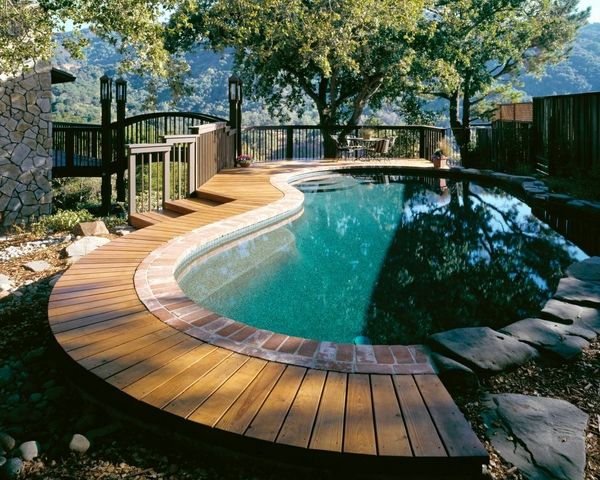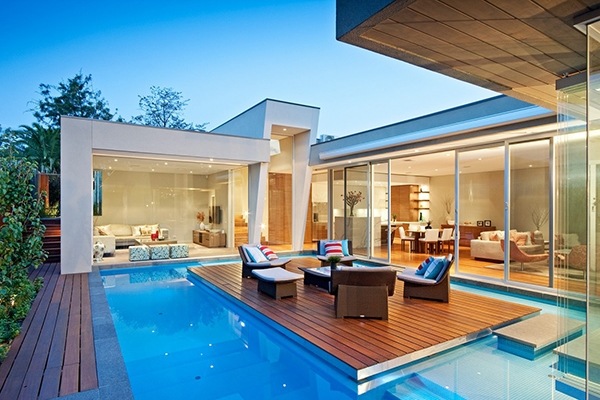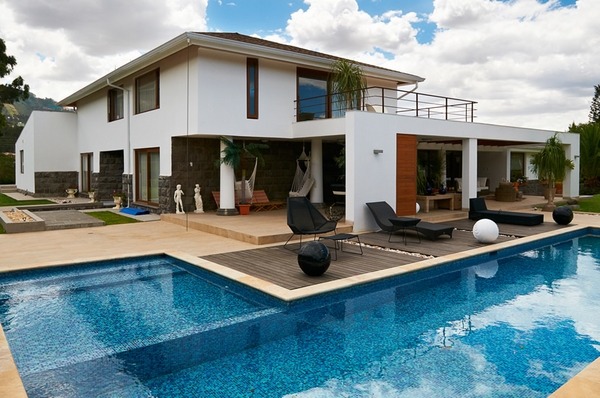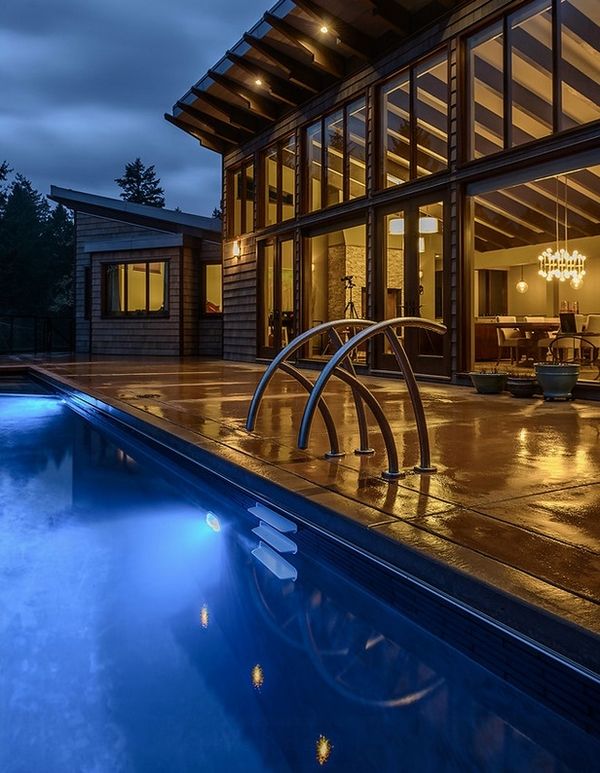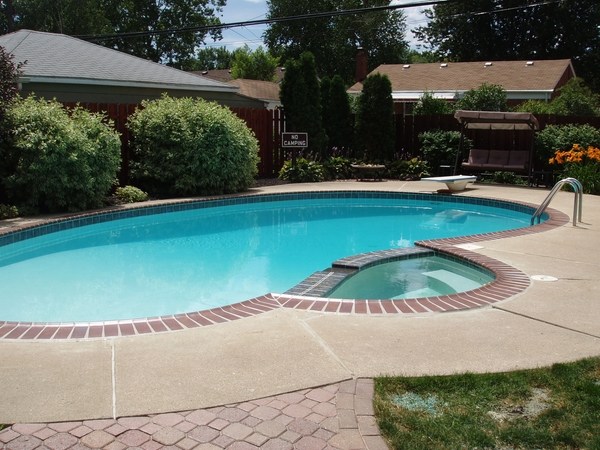Pool coping is an element of the design of in-ground pools which, by definition, is the edging placed around the top edge of the pool. It has several functions – it separates the structure from the decking and serves as a frame, protects the swimming pool as well as protecting the surroundings from being damaged by water. In addition to the practical functions, pool coping is a strong decorative accent and provides an opportunity to enhance the appearance and the visual aesthetics of your swimming pool. In simple words, this is much like garden edging – it defines the areas, creates a finished look and adds to the visual appeal.
Types of pool coping – what do you need to know
In ground pool coping comes in different designs. What are the types? How to choose the best material? What are the pros and cons of the different materials? We shall give you useful information and will give you some swimming pool design ideas which will help you create a fantastic outdoor space.
Top mount pool coping is the most popular type of coping. It is made of powder-coated aluminum and us also called C-channel coping, or half-round coping due to the particular shape of the profile.
Cantilever edge pool coping means that Styrofoam forms are temporarily attached to the lip of the pool and a concrete decking is been poured. Once the concrete is poured, the foam forms are removed.
Flat mount coping is a track that holds the pool liner and on top of it you can mount coping stone, pavers, etc. and technically is not considered to be a coping.
How to choose pool coping finishes?
Pool coping comes in a large variety of materials – poured concrete, brick, natural stone like limestone, sandstone, slate, flagstone, travertine, granite, pre-cast concrete, tile, pavers, etc. Each of those has different color, pattern, appearance and visual appeal but you have to make sure that whatever the material, it is sealed so that water does not damage your coping or leave unsightly marks. It is best if you chose a non-slip coating as this is the area for walking around the pool as well and such a coating will increase the safety of people and minimize the risk of slipping.
Choosing the pool coping style depends entirely on your personal taste and the appearance that you want for your outdoor area. You can choose from square edged (cantilevered), bullnose, , and rolled-edge. The square edge is a straight finish while bullnose is a flat surface with a rounded edge. Many people prefer the bullnose finish as it has a more pleasant, softer look. Rolled edge finish is flat and smooth and the edge is turned up at the end the rough-cut edge is typical for coping made of stone and has a more textured look. In any case the coping has to be smooth and without any sharp edges which may cause scratches or injuries to bathers.
Pool coping materials – choosing the right material
Before you choose the material for your pool coping you need to consider some major criteria that it has to meet – durability, safety, comfort, visual appeal. Remember that the material has to work harmoniously with the deck, the interior and the overall exterior style. In addition, it is essential that the material is resistant to cleaning agents like chlorine, acids or in some cases – salt. Some materials get hot quite easily and may be unpleasant to bare feet, which is also an important issue to consider.
Concrete pool coping options
Concrete pool coping comes in two major varieties – poured concrete which is poured in place and precast concrete coping. The advantage of concrete coping is that it can easily fit any style and is the most affordable option compared to natural stone, tile, etc.
Poured vs precast concrete pool coping – what is important to know?
Poured concrete is an option involving the use of a mold which is placed all around the edge of the pool. The cement is poured on site giving the coping a seamless appearance. Poured concrete is solid and durable and you can choose a variety of colors to match the coping with your deck as well as the type of coping edge – flat edge, bullnose, curved edge, etc. Experts recommend poured concrete coping when you want smaller pools to appear larger. However, installation is expensive and laborious. Installing the coping requires workers, equipment and in general, is not a DIY project. Sealing the poured concrete coping after installation is strongly recommended.
Precast concrete coping comes in pre-fabricated blocks and you can choose from a variety of textures, patterns and colors. This is the least expensive option as you can buy them and install the pieces around the pool using mortar and caulking between individual sections. Unlike poured concrete, where the color is uniform, you can combine pre-cast concrete coping units in different colors and give you more design opportunities. This option is more suitable for a DIY project as it does not require any special equipment. You have to seal the coping with a weatherproof, pH neutral sealant.
Natural stone and brick – add warmth and texture to the exterior design
Without any doubt, natural stone and bricks have an enormous charm and add tons of character to your pool design. Brick coping looks very natural, and can be used in many design styles. Bricks are durable and will last for decades. In addition, they do not require a lot of maintenance.
Pool coping made of granite, limestone, travertine or other stone is very elegant, stylish and sophisticated. Being the most visible element, coping need to have consistent thickness, which is very important to keep in mind when working with natural stone. Choosing among the variety and the decision which stone to use depends entirely on the pool owner, his personal preferences or color, texture, visual aesthetics and the overall color scheme of the project. For example, limestone, travertine and almond granite are a good choice for projects in warmer color shades, while silver travertine, silver marble or granite will work well in the gray-ish color palette.
Travertine coping is a popular choice as the material is valued for remaining cool to the touch and the variety of color options. It comes in various shades of light brown, brown and gold or ivory. Travertine is very porous and tends to absorb water instantly, so when used as pool coping, it should be sealed.
Limestone is a beautiful material used not only for pool coping but for decks. It is durable and will retain its spectacular appearance for many years. In terms of color options, travertine can be found in gray, blue, tan, brown shades. Another reason for the great popularity of limestone is that it is easily cut in shapes and sizes.
Sandstone is very hard wearing as it is comprised of quartz grains. It adds color and texture to the design, it is durable and reliable, anti-slip and salt-tolerant. The resemblance to sand makes sandstone a great choice for swimming pool coping, decks and outdoor covering.
Slate is another option. It is installed easily and can be cut in varying lengths and widths which makes it popular among pool builders and designers. Slate is durable and comes in many color shades – from dark gray and black to brown, red, green, blue-gray, etc.
Granite is your choice when you look for something which will last practically forever. Granite coping offers a consistent look, and being one of the hardest stones – durability and reliability. Elegant, classy and versatile, granite coping is a good choice for almost any design style but you need to have it sealed.
In general, natural stone coping is a more expensive option, but offers much more elegant and stylish appearance. For families with young children, the fact that natural stone and bricks are skid-resistant is especially important as safety is always a priority.
Pavers pool coping – pros and cons
Pavers coping can transform the look of your pool and they come in many types and a wide array of colors, shapes and sizes. Paver coping is installed easily and offers a consistent finish of the pool and can be replaced easily, if necessary. In addition, pavers are very durable, slip resistant and can provide the look of natural stone. Pavers are very dense and nonporous, chlorine will not affect their color and due to the fact that they are salt resistant, pavers are a good choice for salt pools as well, especially if they are protected with a sealer.
Wood and composite materials can be also used for pool coping. Wood, however, requires a lot of maintenance, and despite the amazing appearance, it is better to opt for composite materials. They are water and moisture proof and do not absorb water. They will not deform and will not be attacked by pests and insects.


